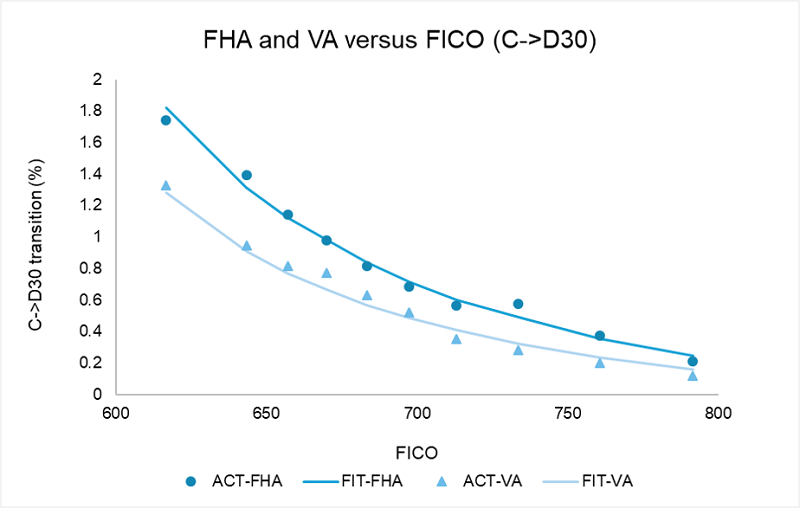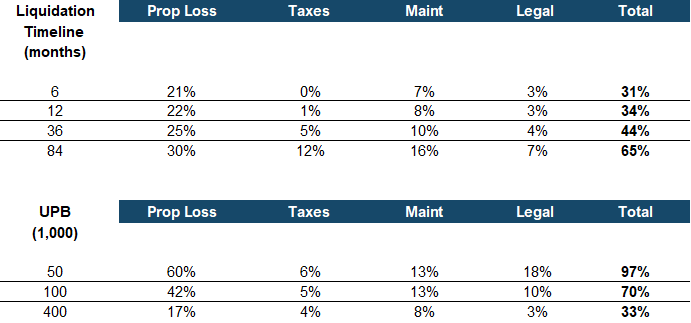
CORE™
Behavioral Models
CORE™ behavioral models forecast the frequency, timing, and severity of losses and voluntary prepayments conditional on macroeconomic scenarios. Scenarios can be differentiated by mortgage rates, home prices, and unemployment.
Prepayment Models
Asset Type Coverage
-
Agency (Agency-Securitized and Agency-Eligible)
-
Non-Agency (Portfolio Loans and loans securitized in PLS)
-
Government-Insured (FHA, VA, and RHS)
Explanatory Factors
-
Refi-incentive, Age, Burnout
-
UPB, LTV, GEO, Seasonality
-
SATO and LTV Change
Additional Features
Our model captures the complex and highly non-linear relationships between inputs and prepayments. We capture distinct behavior within sectors and products:
-
Within GNMA: VA loans have faster prepayment rates and a unique age profile
-
Within Non-Agency: Legacy loans have higher base case speeds but lower refi sensitivity
-
All prepayment components are included, such as rate/term refi, cashout, curtailments, and housing turnover.
Credit Frequency Models
We employ an exhaustive set of borrower, loan, property, and macroeconomic factors, utilizing over 30 attributes. Our Missing-Value-Models are designed to accommodate a wide range of available data.
Asset Type Coverage
-
Agency (Agency-Securitized and Agency-Eligible)
-
Non-Agency (Jumbo, Non-QM, Legacy)
-
Government-Insured (FHA, VA, and RHS)
Explanatory Factors
-
Co-Borrower, DTI, Doc, FICO, Occupancy, Purpose
-
HPA, Unemployment change
-
Age, Lien Position, Time-in-State, Modifications
-
Product Specific: Balloons, IO, and Hybrids
Additional Features
Model projections incorporate both home prices and unemployment change. We track detailed loan status from Current through REO, including time spent in each state. Granular sub-models capture distinct behavior within sectors and products.
-
Within GNMA: FHA loans have worse credit than VA after adjusting for attributes
-
Within Non-Agency: Hybrid loans have worse credit pre and post reset
Each transition is estimated with a generalized Logistic model. This statistical framework allows for complex and non-linear behavioral responses, to support the handling of competing risks.
Loss Severity Model
Our Loss Severity Model is driven by a large set of explanatory factors including State, Property Value, UPB, Foreclosure Type, Occupancy, Purpose, Channel, and Observation Date.

We project total loss severity as well as all four major relevant components, including:
-
Property Loss
-
Taxes and Insurance
-
Maintenance
-
Legal
The Loss Severity Model is fully integrated with the Credit Frequency Model. Liquidation timelines are produced by the Credit Frequency Model and input into the Severity Model. This integration enables users to perform “what if” exercises. Our estimation data includes more than 275,000 actual liquidations over the 2000-2017 period.
Term Structure Models
MIAC’s specification and implementation of the BGM Model has the following important features:
The forward curve is driven by three independent Brownian Motions which capture the full dynamics of yield curve movements. In particular, this allows for non-parallel yield curve shifts, which can be important for accurate duration estimates for Hybrids and mortgage derivatives, such as IOs.
Each volatility function is specified as the product of four components: a time-homogeneous horizon-dependent component, a rate level component, a calendar-dependent component, and a Monte-Carlo calibration component.
The volatility function, which describes the relationship between basis point volatility and the level of forward rates, is specified as a Displaced Diffusion Model. This specification is highly flexible and allows for a wide variety of model volatility skews. Lognormal and Normal models are special cases. Although lognormal and normal models are easier to implement and calibrate, evidence from both historical yield curve movements and observed volatility skews indicates that a more sophisticated approach is needed.
The production model is calibrated to a standard set of European Swaptions and Caps on a daily basis. Users can customize this calibration set if desired. Calibration reports are available.
Model Validation
Validation
The CORE family of models is regularly validated, both internally and externally by a third-party model validation firm.
Documentation
Technical documentation designed to meet the requirements of FRB SR 11-7, FHFA AB 2013-07, and other regulatory Model Risk Management Guidance is available upon request.